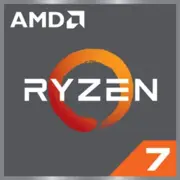Advantages
- More Total Cores: 20 (20 vs 8)
- Higher Technology: 5 nm (5 nm vs 7 nm)
- Higher Memory Type: LPDDR5-6400 (LPDDR5-6400 vs DDR4)
- Newer Launch Date: April 2022 (March 2022 vs April 2022)
Basic
Apple
Label Name
AMD
March 2022
Launch Date
April 2022
Desktop
Platform
Desktop
M1 Ultra
Model Name
?
The Intel processor number is just one of several factors - along with processor brand, system configurations, and system-level benchmarks - to be considered when choosing the right processor for your computing needs.
Ryzen 7 5700
-
Code Name
Cezanne
-
Generation
Ryzen 7 (Zen 3 (Cezanne))
CPU Specifications
20
Total Cores
?
Cores is a hardware term that describes the number of independent central processing units in a single computing component (die or chip).
8
20
Total Threads
?
Where applicable, Intel® Hyper-Threading Technology is only available on Performance-cores.
16
20
Performance-cores
-
-
Basic Frequency
3.7 GHz
-
Max Turbo Frequency
?
Max Turbo Frequency is the maximum single-core frequency at which the processor is capable of operating using Intel® Turbo Boost Technology and, if present, Intel® Turbo Boost Max Technology 3.0 and Intel® Thermal Velocity Boost. Frequency is typically measured in gigahertz (GHz), or billion cycles per second.
up to 4.6 GHz
2.0 GHz
Performance-core Base Frequency
-
3.2 GHz
Performance-core Max Turbo Frequency
?
Maximum P-core turbo frequency derived from Intel® Turbo Boost Technology.
-
192K per core
L1 Cache
64 KB (per core)
24MB shared
L2 Cache
512 KB (per core)
-
L3 Cache
16 MB
Apple M-Socket
CPU Socket
?
The socket is the component that provides the mechanical and electrical connections between the processor and motherboard.
AMD Socket AM4
-
Bus Frequency
100 MHz
-
Multiplier
37.0x
-
Multiplier Unlocked
Yes
5 nm
Technology
?
Lithography refers to the semiconductor technology used to manufacture an integrated circuit, and is reported in nanometer (nm), indicative of the size of features built on the semiconductor.
7 nm
120 W
TDP
65 W
-
PCI Express Version
?
PCI Express Revision is the supported version of the PCI Express standard. Peripheral Component Interconnect Express (or PCIe) is a high-speed serial computer expansion bus standard for attaching hardware devices to a computer. The different PCI Express versions support different data rates.
Gen 3, 20 Lanes (CPU only)
-
Transistors
10,700 million
Memory Specifications
LPDDR5-6400
Memory Type
?
Intel® processors come in four different types: Single Channel, Dual Channel, Triple Channel, and Flex Mode. Maximum supported memory speed may be lower when populating multiple DIMMs per channel on products that support multiple memory channels.
DDR4
128GB
Max Memory Size
?
Max memory size refers to the maximum memory capacity supported by the processor.
-
16
Memory Channels
?
The number of memory channels refers to the bandwidth operation for real world application.
Dual-channel
-
ECC Memory
Yes
GPU Specifications
True
Integrated Graphics Model
?
An integrated GPU refers to the graphics core that is integrated into the CPU processor. Leveraging the processor's powerful computational capabilities and intelligent power efficiency management, it delivers outstanding graphics performance and a smooth application experience at a lower power consumption.
N/A
Benchmarks
Geekbench 6 Single Core
Apple M1 Ultra
2390
+20%
Ryzen 7 5700
1988
Geekbench 6 Multi Core
Apple M1 Ultra
18219
+116%
Ryzen 7 5700
8438
Geekbench 5 Single Core
Apple M1 Ultra
1768
+25%
Ryzen 7 5700
1420
Geekbench 5 Multi Core
Apple M1 Ultra
23501
+189%
Ryzen 7 5700
8133
Passmark CPU Single Core
Apple M1 Ultra
3868
+20%
Ryzen 7 5700
3228
Passmark CPU Multi Core
Apple M1 Ultra
41184
+70%
Ryzen 7 5700
24246
Related CPU Comparisons
Share in social media
Or Link To Us
<a href="https://cputronic.com/cpu/compare/apple-m1-ultra-vs-amd-ryzen-7-5700" target="_blank">Apple M1 Ultra vs AMD Ryzen 7 5700</a>



